Why are northerners Thomas Edison and Henry Ford linked to Florida? Well, they traded the sometimes harsh, northern winters for sunny, warm days in the Sunshine State. Many lucky folks today do the same thing. To see their take on life in Florida in their homes and gardens, schedule a visit to the Edison & Ford Winter Estates in Fort Myers and learn more about these two great men of the early 20th century. Also, make sure to stop in the museum on the grounds to view interesting artifacts highlighting both men’s ingenuity. The Edison & Ford Winter Estates is an easy spot to visit when you’re in southern Florida — from either the east or west coast. For more information on visiting the area, please see A Guide to Southwest Florida.
What You’ll See
Originally, Thomas Edison purchased some property and built a home here. Several years later, Henry Ford bought the house next door when it came on the market. Highlights of the estates are below. There are a few additional places you’ll see when you visit, like the caretaker’s cottage and the swimming pool, but these are the main sights.
Seminole Lodge – Thomas Edison’s Winter Home
It all began in 1885 when Thomas Edison, at 38 years old, purchased the land for $2,750 and began sketching the layout of his home. The lumber was cut to specifications in Maine and shipped to the site. The home was a vacation getaway during the cold Northeast winters for him and his second wife, Mina, and the children. (His first wife, Mary, died in 1884; she and Thomas had three children together. Mina and Thomas had three children together, as well.) He named the home Seminole Lodge. Famous guests were John Burroughs, Harvey Firestone, Henry Ford, and President-Elect Herbert Hoover.
The guest house was originally sold to Edison’s business partner, Ezra Gilliland. However, they had a falling out, and Edison later repurchased the house. The main house and the guest house were remodeled, and the dining room was moved from the main house to the guest house.
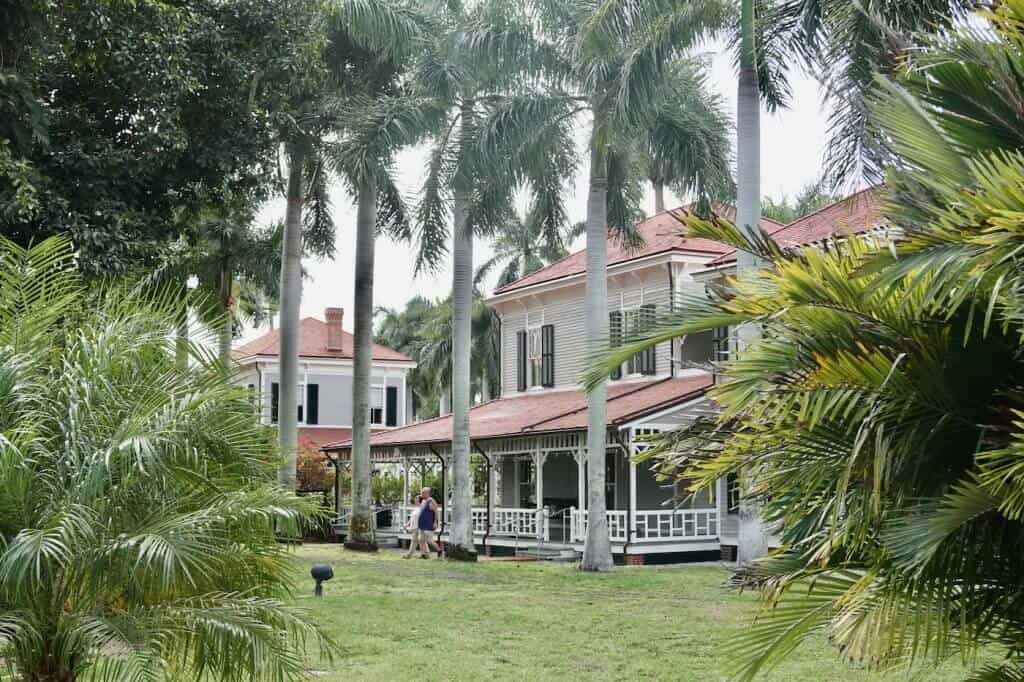
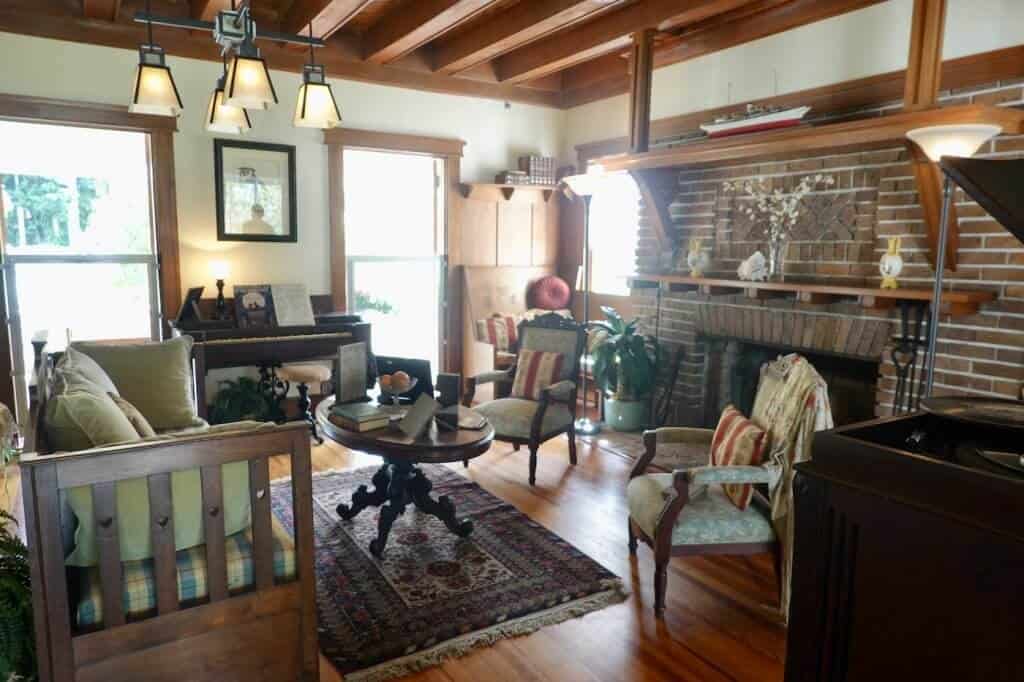
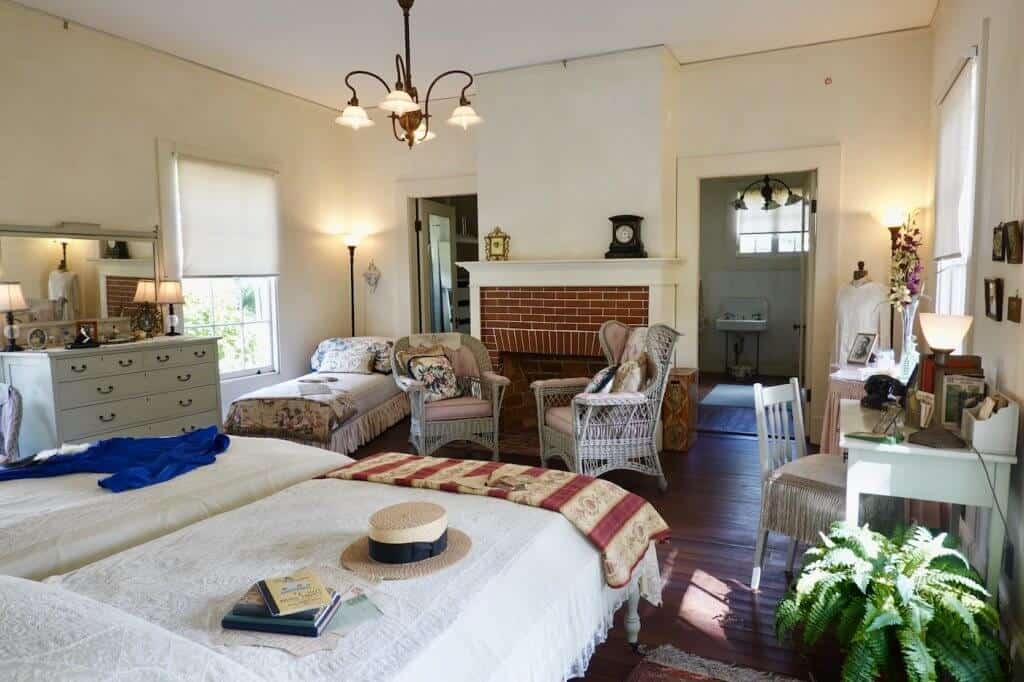
Edison’s Study & Moonlight Garden
This study and the accompanying Moonlight Garden, just outside the study, are situated exactly where Edison’s laboratory once stood. Interestingly, Henry Ford paid for the building of the study as a way to thank Edison for allowing his laboratory (which once stood here until 1928) to be moved to Greenfield Village, a historical park Henry Ford created in Dearborn, Michigan, to house buildings of historical significance. (By the way, if you visit Greenfield Village, you’ll be able to see the Wright Brothers home and cycle shop along with a good number of other buildings from the late 1800s/early 1900s.)
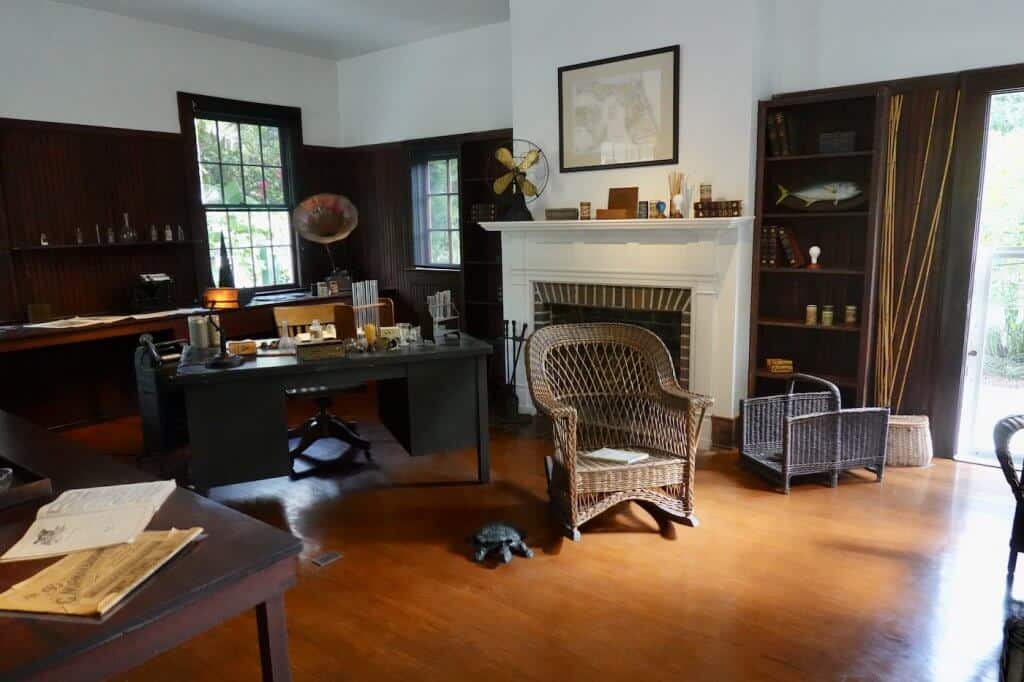
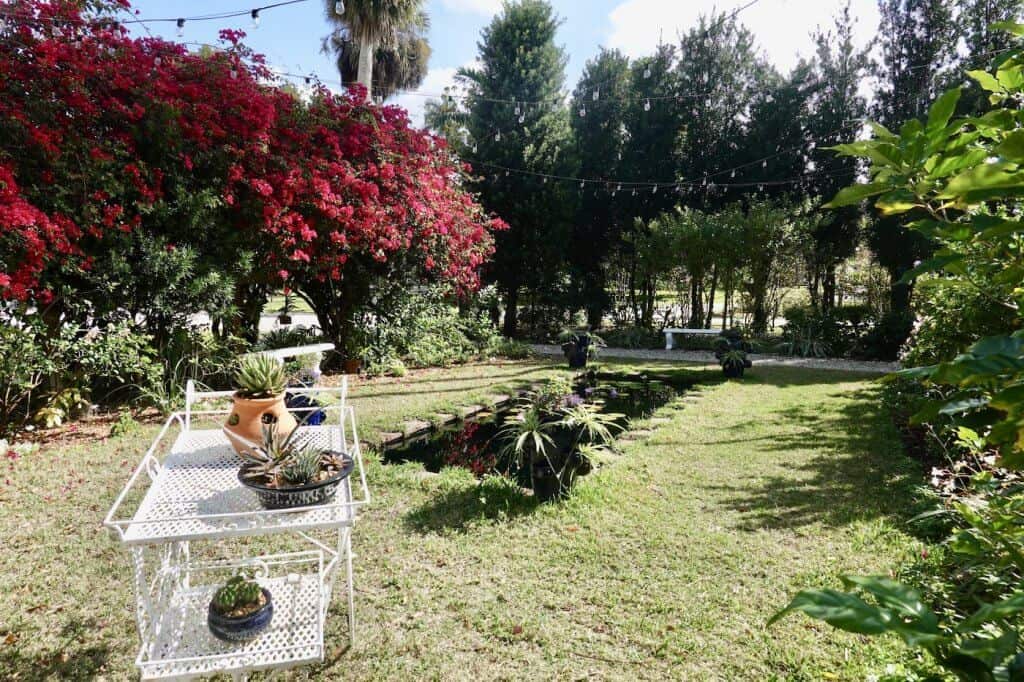
The Pier
Originally constructed to receive building supplies for the house, the pier later became a favorite spot for fishing and entertaining guests. Only the pilings remain, but one can easily envision it back when Edison resided here.
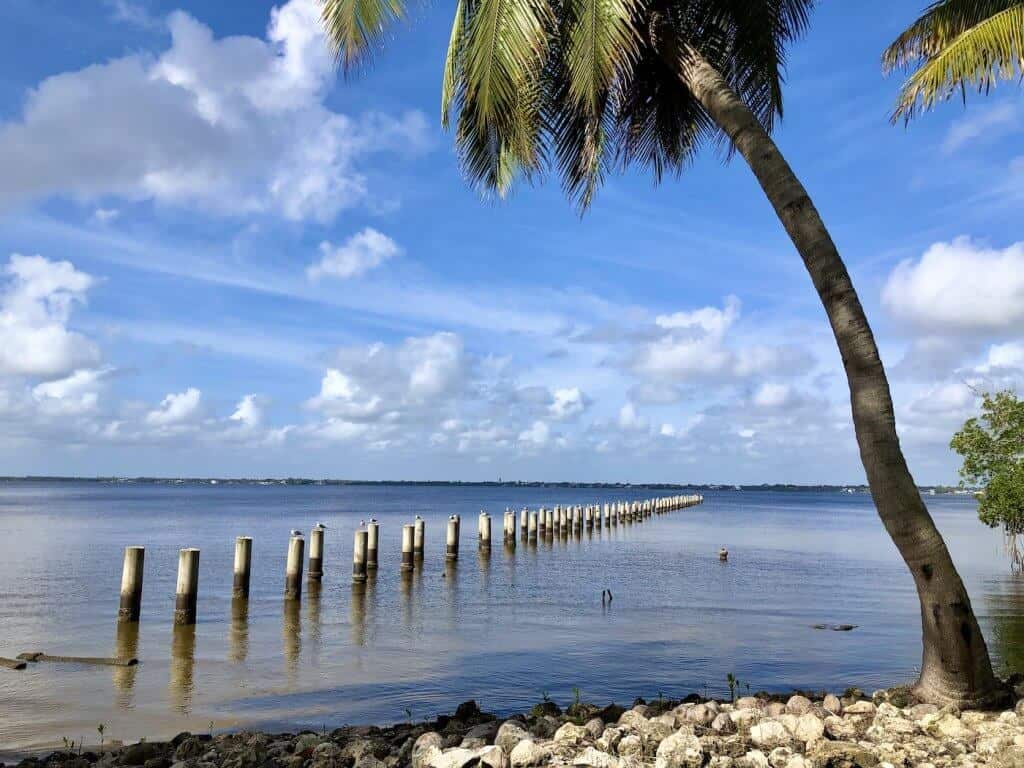
The Mangoes – Henry Ford’s Winter Home
After visiting his mentor, Thomas Edison, at Seminole Lodge, Henry Ford bought this home next door for $20,000 in 1916. The two families enjoyed several winters in southwest Florida together. Today, the houses make up the estates of these two famous Americans.
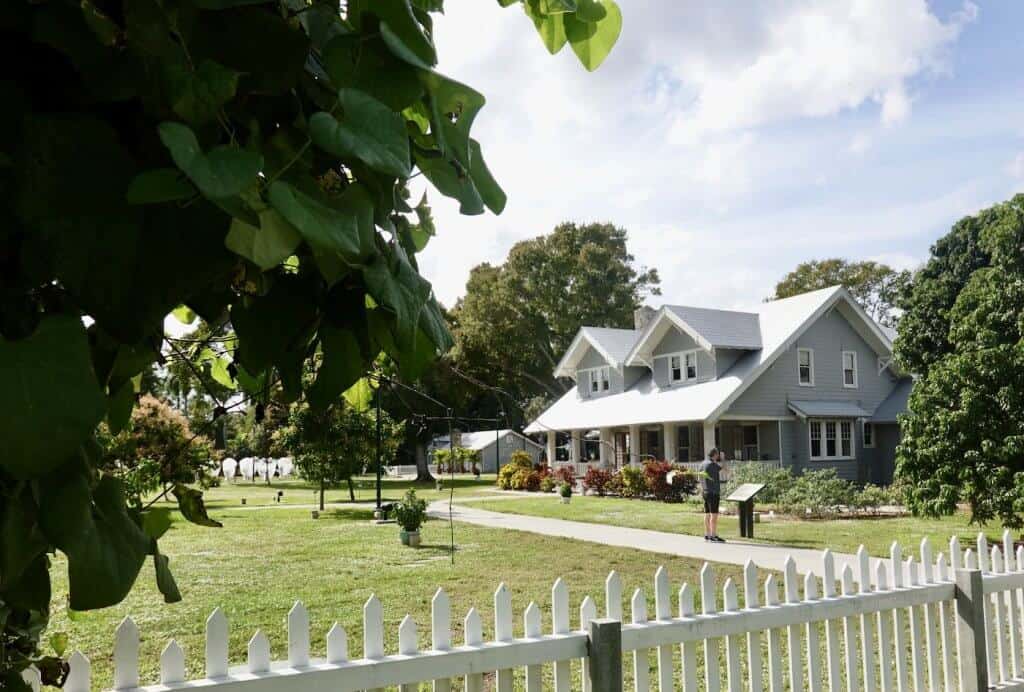
The Gardens and Grounds
The gardens and grounds are a pleasure to stroll through. There are thousands of plant varieties. Each is labeled so if you have an affinity for plants, this will be a treat. There’s also a garden center (and classes at certain times) that offers a variety of plants, pots, and more.
The Museum
The museum offers plenty of artifacts (early telegraph machines, phonographs, batteries, automobiles) from Edison and Ford. One exhibit features the automobile and information on trips that Edison, Ford, Burroughs, and Firestone took with their wives from 1915-1924; they dubbed themselves the Four Vagabonds. Other displays focus on the early phonographs with several on display.
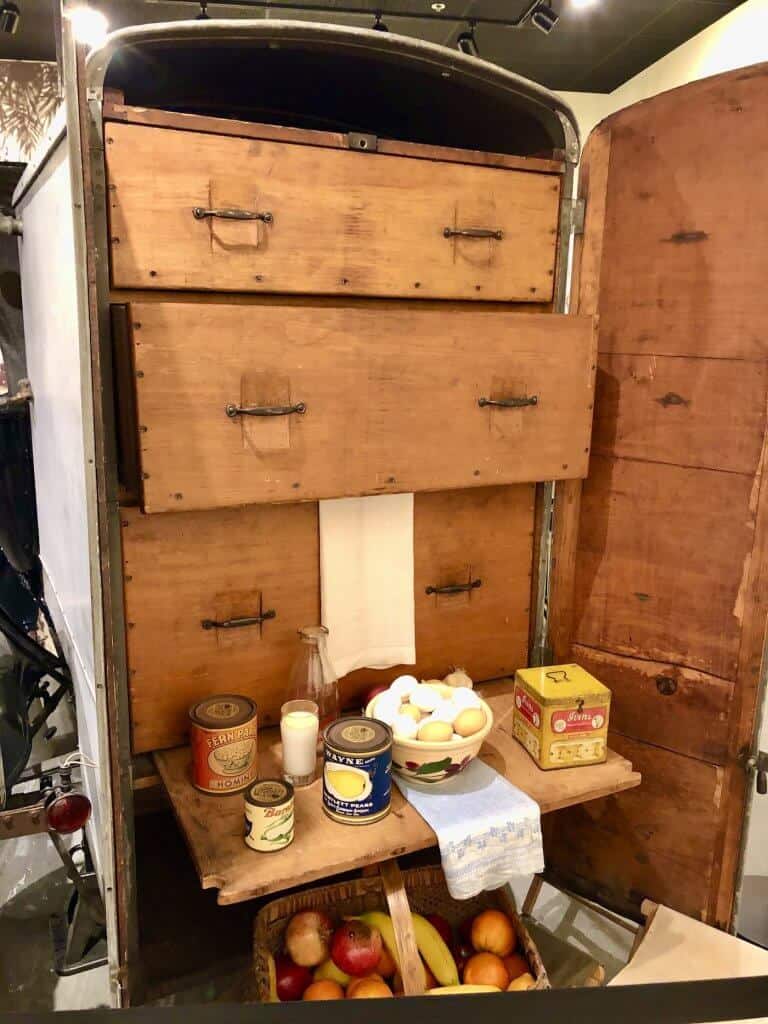
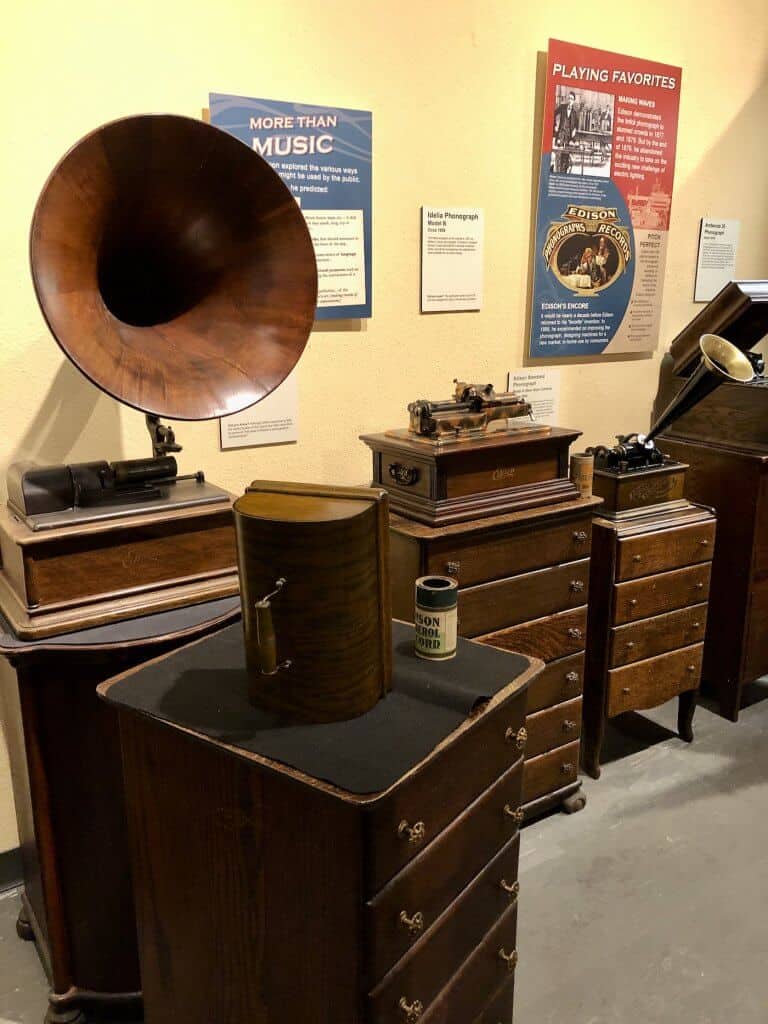
The Banyan Tree
One of the quests of Thomas Edison, along with Henry Ford and Harvey Firestone, was to find a natural source of rubber in the United States. They no longer wanted to be dependent on foreign rubber. The Banyan tree was thought to be such a source as its sap could be transformed into rubber. The tree on the property was planted in the mid-1920s and is a spectacular specimen with aerial roots that grow from the sides of the trunk and into the ground. Actually, the banyan tree reminds me of the mangrove trees which are so prevalent in southwest Florida, as they also have aerial roots.
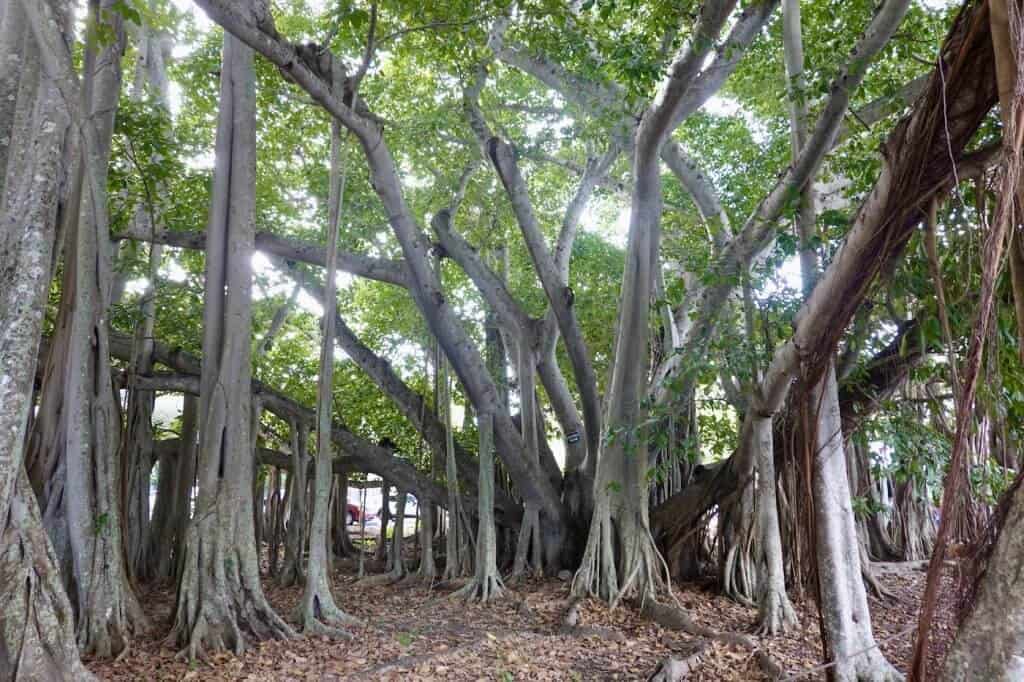
Edison Botanical Research Laboratory
Founded in 1927, the laboratory was the home base for the Edison Botanical Research Corporation. Edison, along with Harvey Firestone and Henry Ford, were worried about the country’s dependence on foreign raw materials, and they sought a domestic supply of rubber. This lab is where Edison and his team tested over 17,000 plants for their ability to produce a substance to create rubber. They found what they were looking for in the Goldenrod plant. Today, you can walk through this fascinating building — that includes a darkroom, machine shop, and a chemical processing lab — where you can imagine the team researching the properties of different plants. If this building piques your interest, check online for a small group guided tour through this lab that is offered on certain days.
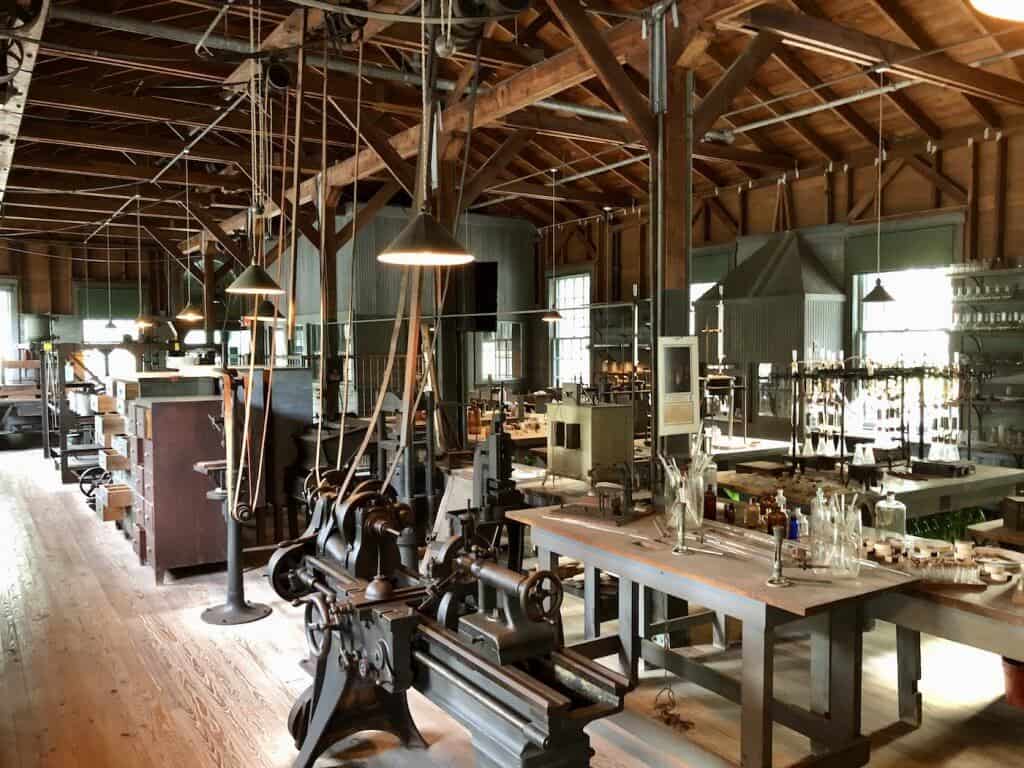
Historic Overview: How were Edison and Ford Connected?
Thomas Edison
- Born in 1847, Edison was taught primarily by his mother (a school teacher) and he was a voracious reader. His first major invention in his early 20s was the updated telegraph machine and the stock ticker tape machine.
- Also, Edison improved the design of the lightbulb for mass production. His lightbulb could last more hours than previous ones, and it had a screw base.
- He also built a power generation distribution system for homes and businesses. In 1879, Edison hosted a large event at his Menlo Park, New Jersey facility to showcase his power generation system. This earned him funding to further his power generation project.
- In 1882, Edison wired some buildings in a lower Manhattan area and proved that one could distribute electrical power. Edison wowed many at the event. However, his technology used direct current (DC) which was relatively low voltage and, therefore, couldn’t be transmitted very far.
- At roughly the same time, an engineer who had worked for Edison in Menlo Park approached him and suggested exploring alternating current (AC) since it could be transmitted much further than direct current (due to its higher voltage). However, Edison nixed that idea because he thought the high voltage would be too dangerous. That engineer decided to pursue AC on his own because he thought high voltage would make power generation even less expensive (since one would need fewer power generation stations). That engineer’s name was Nikola Tesla.
- Edison and Tesla competed to win the bid to build a hydroelectric power plant in Niagara Falls, New York. J.P. Morgan decided to back Edison’s idea. At around the same time, Tesla found his benefactor, George Westinghouse. The “current wars” were on: AC versus DC. Tesla offered to relinquish his share of royalties (thereby reducing the overall project cost), and Westinghouse won the bid. Thus, Edison’s DC was not the power generation method that prevailed.
- Edison was stubborn about the DC/AC conflict. When he wired his Ft. Myers home, he wired it for DC and used a generator.
- However, Edison was not wedded to electricity. His other inventions included the phonograph and the kinescope (moving pictures).
Henry Ford
- Born in 1863, Henry Ford grew up on a Michigan farm, became adept at fixing farm equipment, and began repairing pocket watches for people in the area. Ultimately, he left the farm and became a mechanic in Detroit for the Edison Illuminating Company, a company owned by Thomas Edison.
- Back then, the average person wouldn’t travel far from home because of the cost of transportation: train tickets. By the turn of the century, automobiles were introduced, but they were only for the wealthy who could afford them. So Ford thought that if he could design and build a rugged car that the average working person could afford, then people could venture farther from home and see the country.
- Ford worked on designs for an automobile for the common American. One day, Edison was visiting his power generation facility — where Ford was working — and the two met. Ford showed his plans for a motorized vehicle to Edison. After reviewing Ford’s drawings, Edison told him that it was a good design. Encouraged by Edison’s comments, Ford went to work and built the quadricycle — a motorized vehicle with four bicycle tires and a tiller instead of a steering wheel.
- Ford received funding to start a car company in the late 1890s. That company went out of business due, in part, to the fact that the investors didn’t want to make cars for the masses. The investors preferred vehicles with a higher profit margin.
- In an effort to attract new investors, Ford and his team built a car to race against Henry Winton, the premier American automobile racer, in the 1901 Sweepstakes race. Many people didn’t expect Ford to fare well in the race. But Ford’s team won the race. As a result, Ford was able to negotiate investment terms that allowed him to maintain control of the company he wanted to build. Thus, the Ford Motor Company was born.
Edison and Ford
- Edison was Ford’s early idol and, over time, the two men became good friends. Ford visited Edison at his Ft. Myers winter home and, and later, purchased the house next to Edison after its owner offered to sell it to Ford.
- Ford believed that to control production costs, his automotive company must be vertically controlled. Rubber, however, was the raw material with no domestic source, and foreign sources were expensive.
- Harvey Firestone worked with Edison and Ford to develop a domestic source of rubber. The three men created and provided the initial funding for the Edison Botanical Research Corporation — the labs of which are at the Edison and Ford Winter Estates in Ft. Myers.
Visiting the Estates
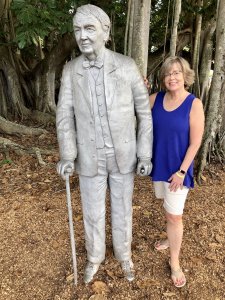
Both homes (and grounds) are open to tour, and it’s a few hours well spent. Actually, a clarification. The homes are not open to walk through; instead, you walk along the outside of the homes and are able to view the insides of rooms on the first floors. At first, I was disappointed when I learned this. But my view quickly changed while on the tour. You won’t regret the fact that you can’t walk inside; by viewing the rooms from the outside, you can see them in their entirety and be able to picture the families waking up in the morning (Thomas and Mina’s bedroom), reading in the living room, playing the piano or Parcheesi, or gathering for a meal in the dining room.
You can choose a self-guided tour or a guided “historian-led” tour. We decided on the self-guided tour and that suited us best. Basically, you download their app, listen to the commentary on your phone via earbuds, and are then able to take your time moving from place to place.
When you arrive, you purchase your tickets at the museum shop located close to the parking lot. Your ticket (actually a wristband) allows you access to everything mentioned in this post. You will easily spend a few hours on the estate.
When you get hungry, just walk along the path between the pool and pier to Pinchers, a casual eatery (for seafood, burgers, or salads) that offers spectacular views of the river and marina; when finished, return to the estate to continue your explorations.
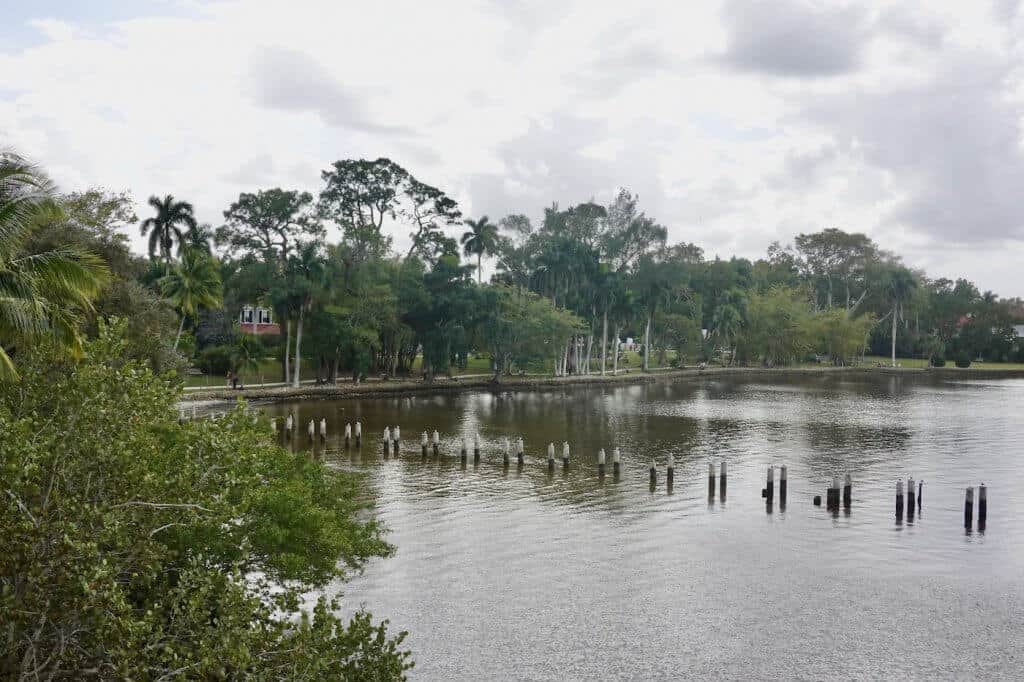
FINAL THOUGHTS
Sitting on the Caloosahatchee River, the Edison and Ford Winter Estates is worth several hours of your time when you’re in the area. Here you’ll walk the grounds, through the beautiful plantings of trees, shrubs, and flowers just as Thomas Edison and Henry Ford did with their families. You’ll also learn about their friendship and work lives at the museum and Edison’s laboratory. There’s a lot of history — including industrialization, inventions, politics, and society — to reflect upon while visiting. For more information on visiting the area, please see A Guide to Southwest Florida.
Comments?
Feel free to share your thoughts and suggestions about visiting southern Florida. Doing so may benefit other travelers. Thanks! 🙂



